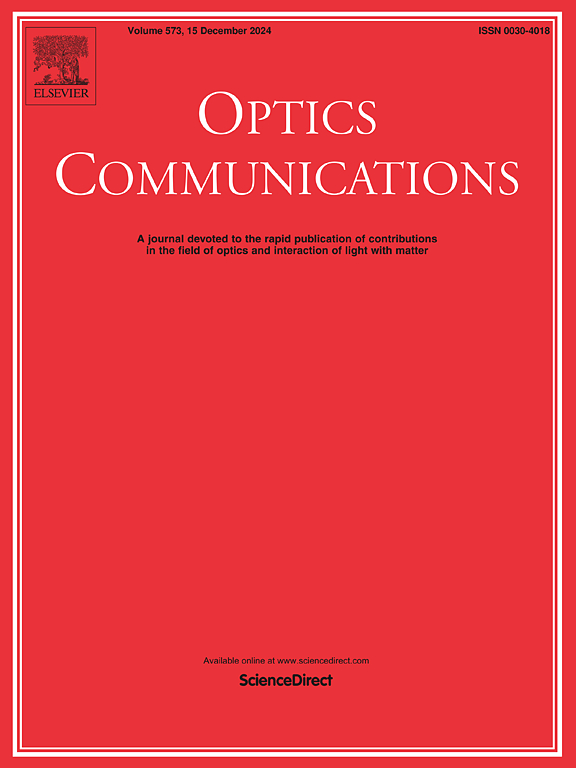Spin angular momentum of femtosecond striped space-time surface plasmon polaritons
IF 2.2
3区 物理与天体物理
Q2 OPTICS
引用次数: 0
Abstract
Surface-bound electromagnetic waves, such as surface plasmon polaritons (SPPs), carry transverse spin angular momentum (SAM) oriented perpendicular to their propagation direction. In ideal monochromatic plane waves, this transverse SAM arises from spatial gradients in the energy flow density and remains confined to the in-plane component. However, when the surface field has a spatial structure, the additional gradient along the in-plane direction gives rise to an out-of-plane SAM component, allowing the spin vector to attain a fully three-dimensional orientation. In this study, we investigate the three-dimensional spin texture of striped space-time SPPs (ST-SPPs)—structured SPP wave packets generated by optical pulses with transverse spatial periodicity and temporal confinement along the propagation axis. Through numerical simulations, we analyze how the SAM texture depends on the transverse periodicity of striped ST-SPPs. Our results reveal that varying the transverse period alters the balance between in-plane and out-of-plane field gradients inherent to SPPs, enabling the emergence of qualitatively distinct spin structures via periodicity control. A comparison between the simulated electric fields and experimentally observed near-field patterns—obtained using two-photon fluorescence microscopy—validates our theoretical model. These findings indicate that striped ST-SPPs offer a versatile platform for robust SAM control on metallic surfaces, with promising applications in chiral-sensitive molecular spectroscopy and surface-bound molecular manipulation.
飞秒条纹时空表面等离子激元极化子的自旋角动量
表面束缚电磁波,如表面等离子激元(SPPs),携带垂直于其传播方向的横向自旋角动量(SAM)。在理想的单色平面波中,这种横向SAM来自于能量流密度的空间梯度,并且仍然局限于平面分量。然而,当表面场具有空间结构时,沿面内方向的额外梯度会产生面外SAM分量,从而使自旋矢量获得完全的三维方向。在这项研究中,我们研究了沿传播轴具有横向空间周期性和时间限制的光脉冲产生的条纹时空SPP (ST-SPPs)结构SPP波包的三维自旋织构。通过数值模拟,分析了条纹st - spp的横向周期性对SAM结构的影响。我们的研究结果表明,改变横向周期改变了SPPs固有的面内和面外场梯度之间的平衡,从而通过周期性控制出现了定性不同的自旋结构。模拟电场和实验观察到的近场模式之间的比较-使用双光子荧光显微镜获得-验证了我们的理论模型。这些发现表明,条纹ST-SPPs为金属表面的稳健SAM控制提供了一个通用平台,在手性敏感分子光谱和表面结合分子操作方面具有广阔的应用前景。
本文章由计算机程序翻译,如有差异,请以英文原文为准。
求助全文
约1分钟内获得全文
求助全文
来源期刊

Optics Communications
物理-光学
CiteScore
5.10
自引率
8.30%
发文量
681
审稿时长
38 days
期刊介绍:
Optics Communications invites original and timely contributions containing new results in various fields of optics and photonics. The journal considers theoretical and experimental research in areas ranging from the fundamental properties of light to technological applications. Topics covered include classical and quantum optics, optical physics and light-matter interactions, lasers, imaging, guided-wave optics and optical information processing. Manuscripts should offer clear evidence of novelty and significance. Papers concentrating on mathematical and computational issues, with limited connection to optics, are not suitable for publication in the Journal. Similarly, small technical advances, or papers concerned only with engineering applications or issues of materials science fall outside the journal scope.
 求助内容:
求助内容: 应助结果提醒方式:
应助结果提醒方式:


